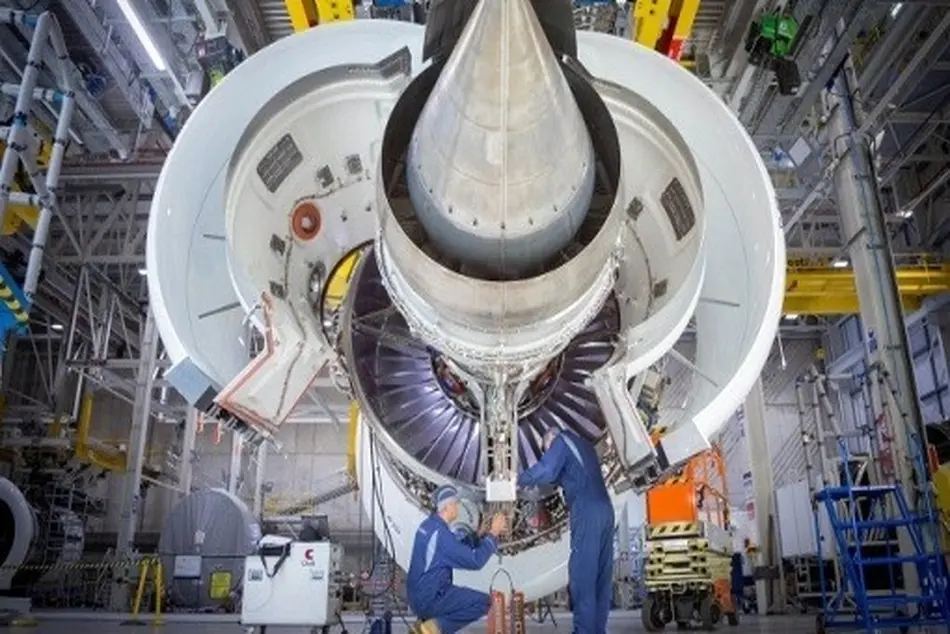Brisk Aftermarket, Defense Demand Buoy RTX In Q3
RTX posted strong third-quarter revenue growth in its aftermarket and defense businesses sufficient to offset tepid commercial original equipment (OE) sales that have been adversely impacted by supply chain challenges and the Boeing International Association of Machinists (IAM) strike.

RTX posted strong third-quarter revenue growth in its aftermarket and defense businesses sufficient to offset tepid commercial original equipment (OE) sales that have been adversely impacted by supply chain challenges and the Boeing International Association of Machinists (IAM) strike.
Sales in July-September rose 6% annually to $20.1 billion and earnings per share reached $1.45, ahead of Wall Street’s $1.34 consensus estimate.
“With commercial OEM sales flat YoY [year-over-year], it looks like RTX is being indirectly impacted by the broader supply chain and other industry issues, but it continues to enjoy good aero aftermarket growth (+11% YoY) while defense was also better than we had anticipated (+10% organic),” Robert Stallard of Vertical Research partners said in an Oct. 22 client note.
For investors, a key concern is the state of RTX’s management plan for Pratt & Whitney’s geared turbofan (GTF) engine. With regard to the GTF engine, RTX CEO Chris Calio said in an earnings call that the plan remains on track. At the company’s maintenance, repair and overhaul (MRO) facilities, throughput of engines is improving. PW1100 output in the third quarter rose 10% sequentially and 27% annually. RTX has reached support agreements with 28 of its customers, covering roughly 75% of the impacted PW1100 fleet.
In a response to an analyst who asked how RTX is balancing between demand from Airbus and the spares pool, and if it was confident about hitting fourth-quarter delivery targets, Calio said that some part numbers have recovered according to RTX’s plan while others “are going to take a little bit longer to recover.” He added that “all in all, we’re aligned with Airbus and what they need here in the fourth quarter and laser-focused on helping them make their deliveries at the end of the year.”
Calio also addressed an analyst inquiry about negative third-quarter OE growth (down 8% annually) at Collins Aerospace. “I would say narrowbody volumes were down. We saw a little bit both on the A320 side as well as the 737 side. We obviously had a little bit of impact from the start of the [Boeing-IAM] strike as well,” he said, adding that “like everybody, we’re looking forward to tomorrow and the situation at Boeing getting resolved.”
Boeing and the IAM reached a new tentative contract agreement on Oct. 19. The ratification vote is set for Oct. 23.
But even if the strike ends soon, Collins may not avoid additional impact.
“Given its sales into Boeing, we believe Collins could see further OE headwinds in 4Q24 with the IAM union strike,” Ken Herbert of RBC Capital Markets said in an Oct. 22 client note.
Looking ahead, Calio highlighted several areas that RTX is targeting for future growth. One is hybrid electric propulsion technology to improve fuel efficiency. He noted that in the third quarter, Airbus Helicopters selected Collins and Pratt Canada for a hybrid electric propulsion system for its Pioneer Lab technology demonstrator, targeting a 30% improvement in fuel efficiency on a twin-engine helicopter.
On the defense side, Collins and Raytheon are collaborating to adapt commercial brake carbon/carbon composite technology to hypersonic missile applications.
“Thermal management is a critical requirement given the high-level speed and high-temperature environments at play,” Calio said. He added that the project team has achieved technology readiness level 6, demonstrating the ability of the parts to survive and perform in extreme environmental conditions.
To support this initiative and commercial applications, Collins is expanding capacity at its Spokane, Washington, carbon brake production facility. The site will add 70,000 ft.2 to its manufacturing space to increase production capacity, RTX said in August.
